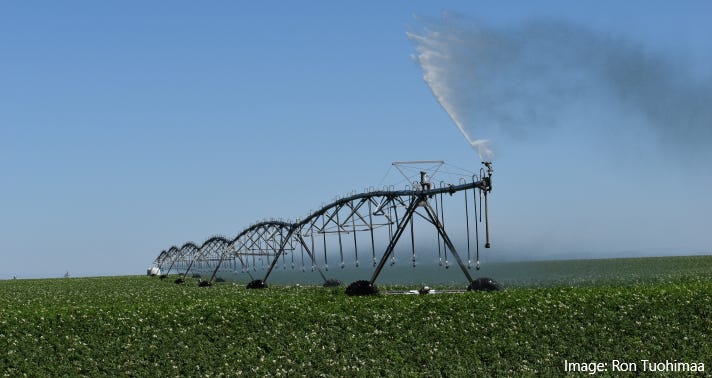Flawed Data - Climate Computer Food
I like to use a Chinese proverb as the reason for my family’s migration from Finland, certainly a country impoverished at the time, for the financial opportunities and gains available in Canada - “When one has three square meals per day, there are many problems in the world, but if one has no square meals per day there is only one problem in the world.” Of course in later life, I migrated once again to the USA. So, unlike today, in our youth, many of us ate all that was placed on the table in front of us – even liver. It seems quinoa, chia seeds, and kale had not been invented as yet.
Unfortunately, there is still a lot of malnutrition, as well as starvation all over the world. We watch politicians and government entities spending trillions of dollars on nonsensical issues and imprudent concerns and wonder why. At times, we see advertisement videos of starving, emaciated children and we are heartbroken. We give to organizations like Care, The Hunger Project, and Project Concern International. And, it is not just a problem an ocean away. We give to Feeding America, Meals on Wheels, and our local food banks.
All plants require carbon dioxide (CO2) to undergo photosynthesis and create oxygen, thus it would seem obvious that an elevated value of CO2 would be advantageous in feeding the world’s people. But hold on to your liquid barley, it is business as usual with the climate change advocacy community. Elevated carbon dioxide will slow agricultural food production, they claim.
While wheat and corn can experience an 11.5% and 8.4% increase in productivity, respectively when CO2 is doubled, those two foods are picked on by NASA as being in critical danger. How do they imply, intimate, and prove this will happen? Like everything else – they use computer models. They dare not employ real-world evidence and physical experimentation using greenhouses and elevating the carbon dioxide inside that structure, because having been already evaluated plants grow much faster and larger.
Scenarios under modeling can be achieved and even controlled by the data that is fed into the system. Dozens of climate models have been revealed to be defective and/or corrupted and proven such by subsequent or later reality. Yet, they continue using the same datasets – why – it accomplishes the desired result.
As I have written about several times, progressive open border policy is often based on climate change causing a food shortage in the originating countries of the migrants. Using data from the climate change advocacy United Nations Food and Agriculture Organization (UNFAO), I have proven this allegation incorrect. Here, here and here are just a few samples. In the linked article from the UNFAO you will see the 10-year upward trend of cereal production (wheat, rice, corn barley, sorghum, etc.) starting in 2014.
As asserted in this linked article from Climate at A Glance:
- As our planet gradually warms, global crop yields and crop yields across the planet are setting new records almost every year
- U.S. crop yields continue to grow, setting new records nearly every year.
- Longer growing seasons, higher temperatures, and more atmospheric carbon dioxide are creating ideal crop conditions.
Naturally, an increase in cereal growth bodes well for the animal husbandry industry. If the political world ever passionately straightened out, there would be plenty of food for everyone, and Miss Piggy’s quote could be universal, “Never eat more than you can lift.”


